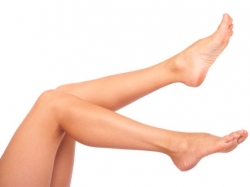Your Legs Health
There’s not a woman I see who, if asked, wouldn’t say she wanted long, smooth legs like a Barbie doll. Taking care of your legs, whatever their shape, is really about taking care of your whole body.

As you age, the muscle tone, shape, and skin condition of your legs (and the rest of your body) can start to deteriorate. But just as it’s possible to improve the health of all your internal body systems, so it’s possible to optimize the health of the parts you can see on the outside. Start off by eating healthily, then try to make sure you exercise regularly. Although healthy eating and regular exercise are essential in the quest for beautiful legs, another crucial step in your leg health is to avoid or minimize problems that can make your legs look unattractive.
The Total Leg Workout
Combining cardiovascular exercise to get your heart rate a little above normal (such as brisk walking, cycling, and jogging) with muscular exercise (such as toning exercise and weightlifting) will help your legs to keep their shape. Make sure you exercise each of the muscle groups in your legs in turn. Exercise your buttock muscles using leg lifts (on all fours, raise each leg in turn) to give yourself the appearance of longer legs. Then, exercise the quadriceps (front thigh muscles), hamstrings (rear thigh muscle), calves, and Achilles’ tendons (in the ankles). Squats and raising and lowering on tiptoes will give you a good, all-around leg workout. Take time to stretch all these muscle groups before and after exercising, too, to keep your legs long-looking.
Cellulite
Cellulite is caused by clumps of unmetabolized fat, water, and trapped waste under your skin that push up against surrounding fibrous tissue and harden into the telltale dimpling.
If you have poor blood flow to your connective tissues, they will sell and stretch apart, allowing fat to bulge through, giving you cellulite. Poor lymph flow, toxicity in your system, heredity factors, hormonal imbalance, lack of sleep, smoking, stress, and over-exposure to the sun also play a part in causing this condition.
Your diet
Follow a hormone-balancing diet which will help combat the free radicals and tissue damage that cause cellulite. In addition, try to make your diet rich in lecithin, a nutrient that can help repair tissue cells in your skin to prevent fat deposits coming to the surface. Lecithin-rich foods include eggs, apples, peanuts, and cruciferous vegetables.
Self-Help
Get moving! Exercise is one of the best ways to shift cellulite because it boosts blood and lymph circulation, encourages sweating to remove waste materials, and restores a slim subcutaneous fat layer. Aerobic exercise that raises your heart rate combined with gentle toning is best. Aim for 30 minutes of aerobic exercise daily, and 30 minutes toning three times a week.
Brush your body Dry body brushing – also called skin brushing – helps break up fatty deposits, aids lymphatic drainage, and stimulates circulation. Skin brushes are available from most good pharmacies and are best used first thing in the morning, before you shower.
Cellulite Body Brushing
Overall it should take between three and seven minutes to “body brush” your entire body. Importantly, remember always to brush towards your heart.
1. Use firm, rhythmic strokes to brush the sole of your right foot. Then brush over the top of your foot towards your ankle. Move to your lower leg; cover the whole surface. Brush from your knee to the top of your thigh. Brush your buttock area up to your waist. Repeat on your left leg.
2. Brush at the top of your buttocks and move upward. Brush the whole of your back up to your shoulders. Brush your right arm, paying particular attention to the area around your armpit. Repeat on your left arm. Finish by brushing gently over your throat and neck.

